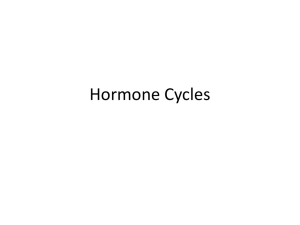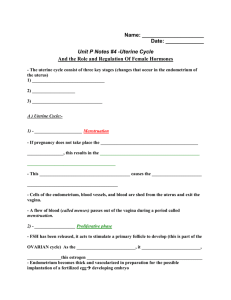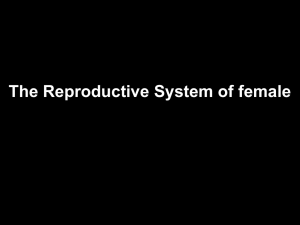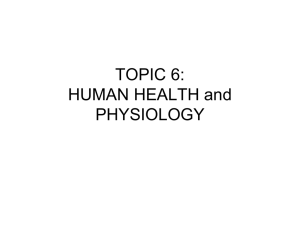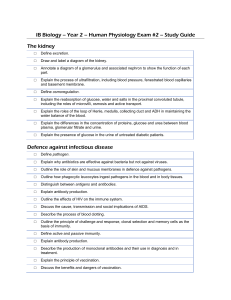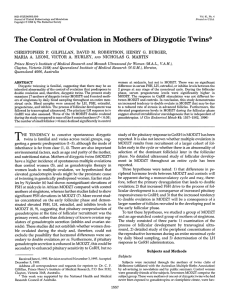Chapter 9. THE HUMAN MENSTRUAL CYCLE Reid L. Norman, PhD Professor, Pharmacology and
advertisement
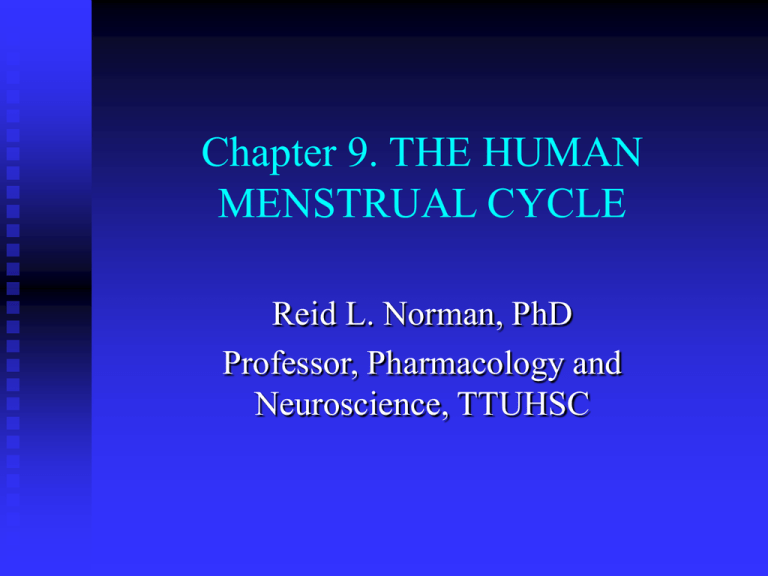
Chapter 9. THE HUMAN MENSTRUAL CYCLE Reid L. Norman, PhD Professor, Pharmacology and Neuroscience, TTUHSC Learning Objectives • Know the hormonal changes that occur throughout a menstrual cycle • List the reproductive hormones and where they are produced • Diagram how secretion of pituitary and ovarian hormones is regulated • Explain how birth control pills work Hypothalamus • Releases GnRH (gonadotropin releasing hormone) in pulses to stimulate pituitary FSH (follicle stimulating hormone) and LH (luteinizing hormone) secretion. • The hypothalamus is under the control of higher brain centers and feedback from ovarian steroids Pituitary • Secretes LH and FSH in response to GnRH • Estrogen, inhibin and progesterone from the ovary regulate the amount of LH and FSH released in a feedback relationship • The pituitary also secretes prolactin, particularly during pregnancy and lactation • TSH (thyroid stimulating hormone), ACTH (adrenocorticotripic hormone) and GH (growth hormone) are secreted by the pituitary and important for normal fertility Ovary • Responds to FSH and LH • Follicular growth and maturation • Secretion of estrogen, progesterone and inhibin • Ovulation in response to LH • Corpus luteum function • Progesterone secretion Hormonal changes in cycle E P LH FSH -14 0 Days from LH peak +14 Feedback relationships HYPOTHALAMUS (GnRH) PITUITARY negative feedback (LH, FSH) OVARY (Estradiol, Progesterone) (Inhibin) negative and positive feedback Hormonal birth control • Birth control pills contain estrogens and/or progestins • Act by suppressing LH and FSH through negative feedback mechanisms • Formulated to mimic the changes that naturally occur during the menstrual cycle • Stimulate the uterus so menstruation occurs Fallopian tube • Ovum is transported to the uterus through the fallopian tubes • Responds to estrogen and progesterone by altering motility (muscular contractions) • Fertilization occurs in fallopian tube • Early embryo does not enter uterus for several days – until the hormonal conditions are right for implantation Uterus • Uterus has a muscular layer (myometrium) and an epithelial lining (endometrium) • Endometrium responds to estrogen in the follicular phase by growth and to progesterone in the luteal phase by becoming secretory in preparation for implantation • Menstruation – if pregnancy does not occur, progesterone levels fall and the endometrium dies and is discharged through the vagina • The cycle begins again with FSH stimulation Pregnancy • When fertilization occurs, the embryo implants in the endometrium and secrets hCG (human chorionic gonadotropin) • hCG stimulate the corpus luteum to produce progesterone to maintain pregnancy • Placenta eventually produces progesterone to maintain pregnancy Lactation • After delivery, prolactin is secreted to stimulate milk production • Follicular development can be suppressed which results in amenorrhea by suckling and this is lactational amenorrhea • Pituitary tumors that secrete prolactin can also cause amenorrhea
